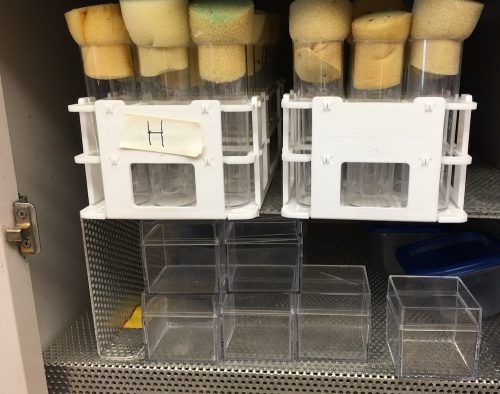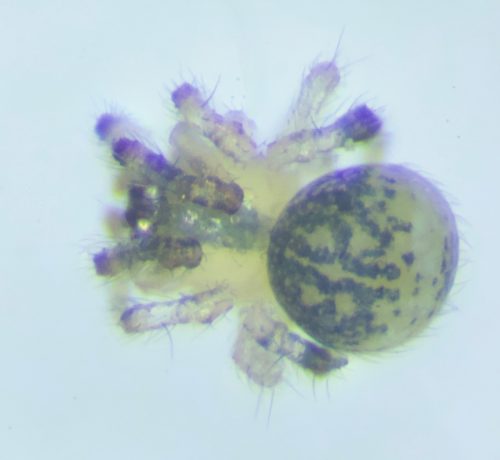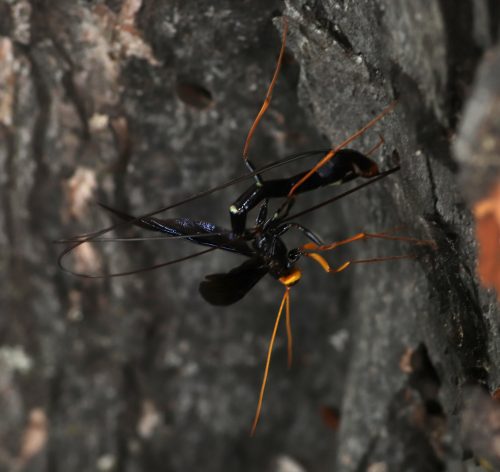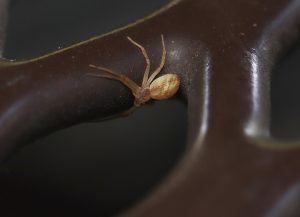This shy cat-faced spider is roosting in the eves of our house, in an awkward little corner that requires me to climb a ladder and twist and crane my neck to get a good look, and even then it’s tricky to maneuver my camera into a good position. So I had an idea.







